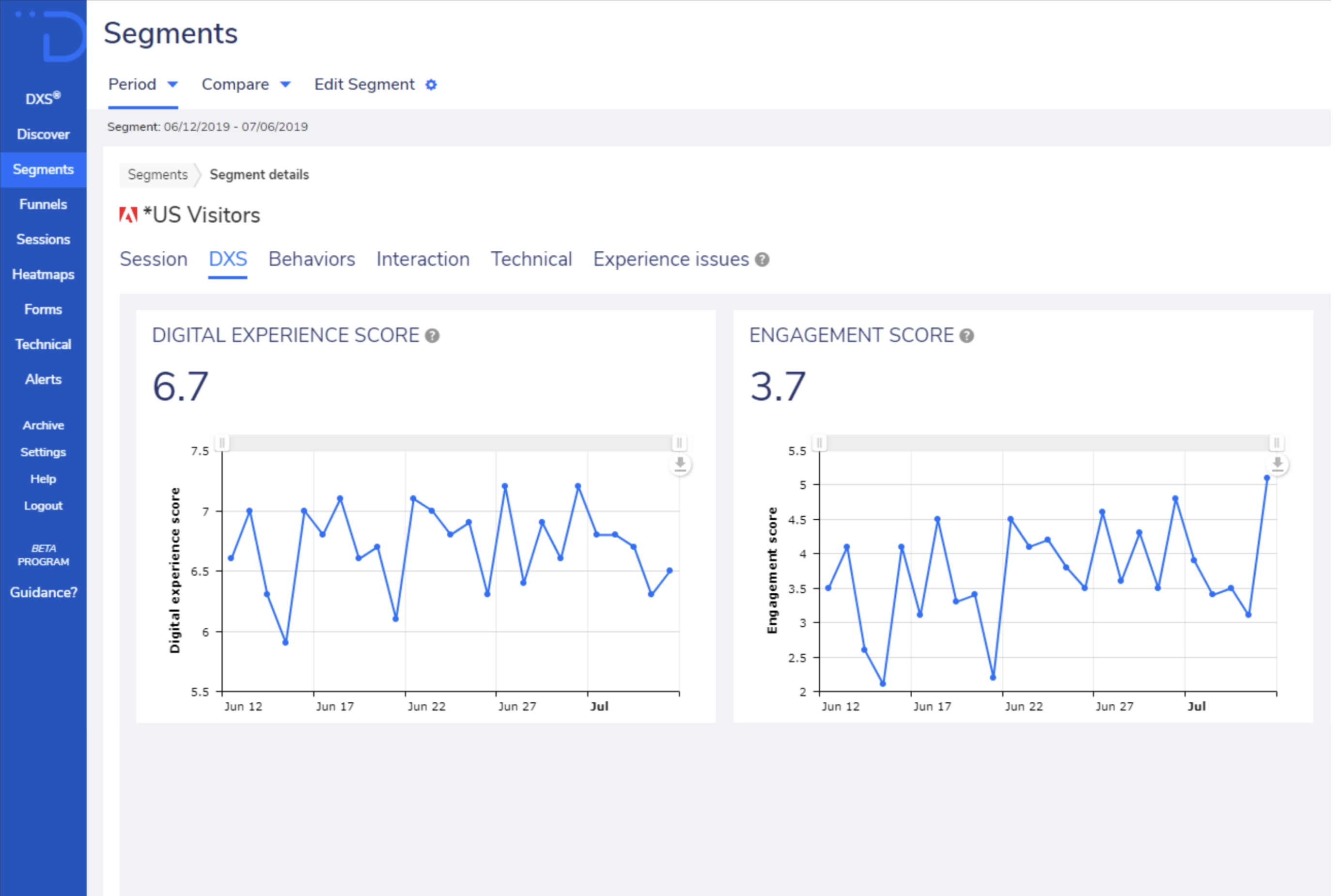A Comprehensive Case Study of Decibel's Digital Transformation Journey
Decibel screenshots from November 2019 and December 2021
Executive Summary
Decibel's digital experience analytics platform significantly improved to address user experience issues, focusing on user engagement, onboarding, and retention. This case study highlights the challenges, design process, and impactful works, including the acquisition by Medallia, then Medallia's subsequent acquisition, improved user satisfaction, and increased customer growth.
Introduction
Decibel's digital experience analytics platform gives businesses insights into user behaviour on websites and apps. The core product has evolved to meet customer needs better, focusing on enhancing user engagement, onboarding, and retention. The acquisition by Medallia, 15 months after my joining, marked a significant milestone in this journey.
Problem Statement
The platform faced issues with a non-intuitive onboarding experience, inconsistent visual language and UI components, suboptimal navigation and information architecture, and inadequate data visualisation. These problems led to user confusion and increased support requests.
Target Audience and Stakeholders
The primary target audience for Decibel's platform includes businesses seeking to improve their website and app user experience. Stakeholders encompass the design and development teams, product managers, engineers, and the broader organisation, all of whom shape the user experience.

Decibel design system - Plectrum
Research and Approach
We conducted comprehensive remote user research and usability testing. Our approach involved frequent user feedback sessions, rapid prototyping, and a collaborative strategy with cross-functional teams. This process enabled us to gather valuable insights and validate improvements effectively.
Visuals and Prototypes
The design process included sketching, wireframing, prototyping, and user interface design. We focused on creating a design system for consistency and merged it with Medallia's system post-acquisition. Visual aids such as sketches, wireframes, and screenshots were instrumental in implementing the improved onboarding process and navigation structure.

User Experience Design Workshop: Paper Prototyping for Decibel Experience Mapping
Work
Notable works included a 31% improvement in user satisfaction scores, a 33% decrease in support requests, and a 29% increase in task completion rates. The platform's largest quarter saw a 32% growth post-acquisition, and joint customer growth increased by 150%.
Challenges and Limitations
We faced challenges balancing different user group needs, working with limited resources, and putting the user at the centre through impact-based prioritisation and effective cross-team collaboration and communication.
Business Impact
Post-redesign, there was significant business growth, evidenced by improved user metrics and the successful acquisition by Medallia. These achievements underscored the platform's enhanced value and the effectiveness of our design and development strategies.
Key Learnings and Future Directions
Key learnings included the importance of user-centric design, rapid iteration, and collaboration across teams. Future directions involve refining the user experience and expanding the platform's capabilities per evolving user needs.
Conclusion
The case study demonstrates how a user-centric and iterative design process led to significant improvements in the Decibel platform, culminating in its successful acquisition by Medallia and enhanced user satisfaction.
Innovation Culture
Our team emphasised an innovation culture that promoted collaboration, agility, and ambition, fostering a supportive and creative work environment. Regular meetings, monthly retrospectives, and innovation hours were critical to sustaining this culture.
The Collaborators
Collaboration with product managers, engineers, and other colleagues was crucial in bringing our digital products to life. This synergy of diverse skills and perspectives resulted in a richer, more innovative digital landscape.

Decibel session analytics dashboard


